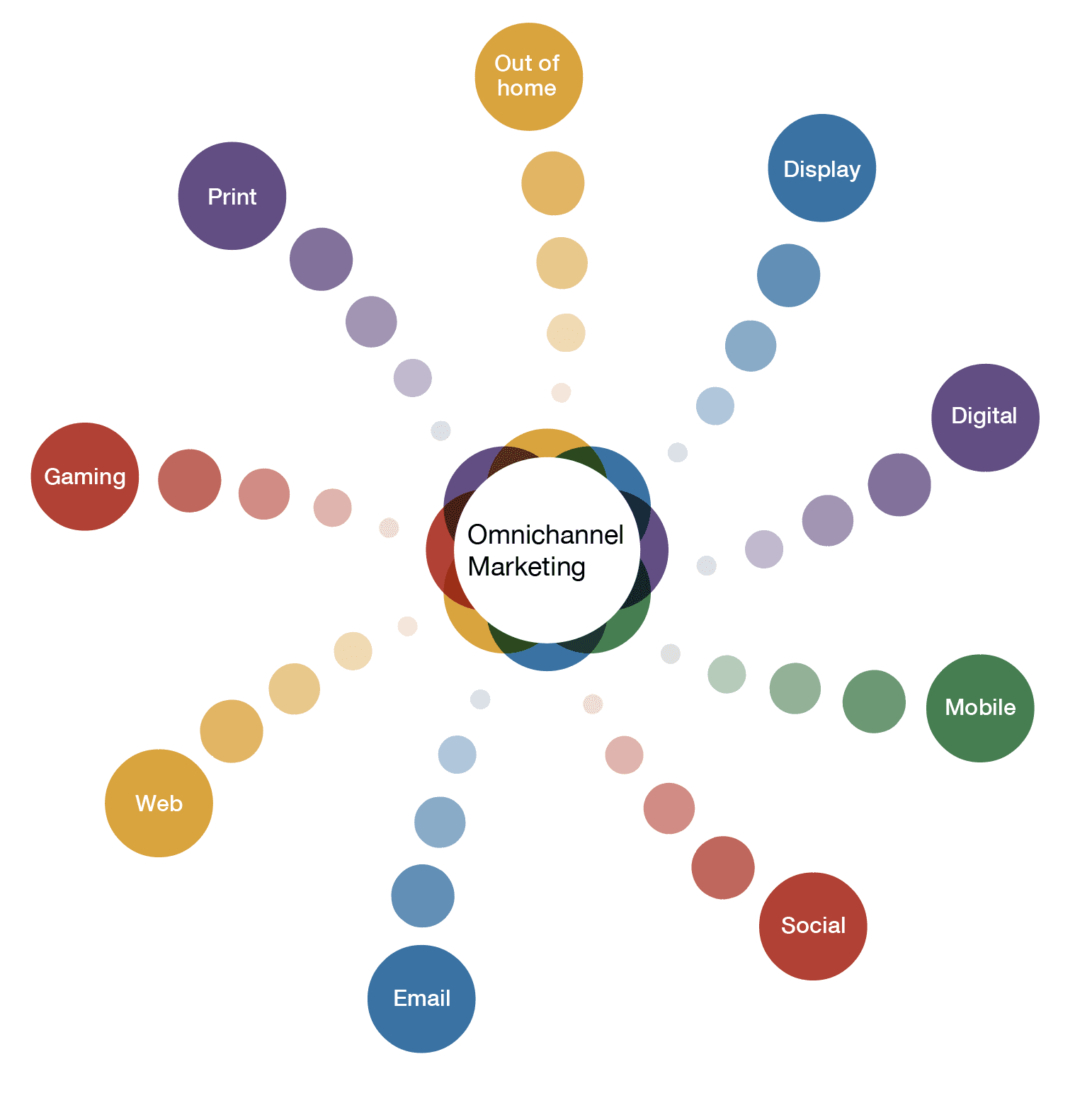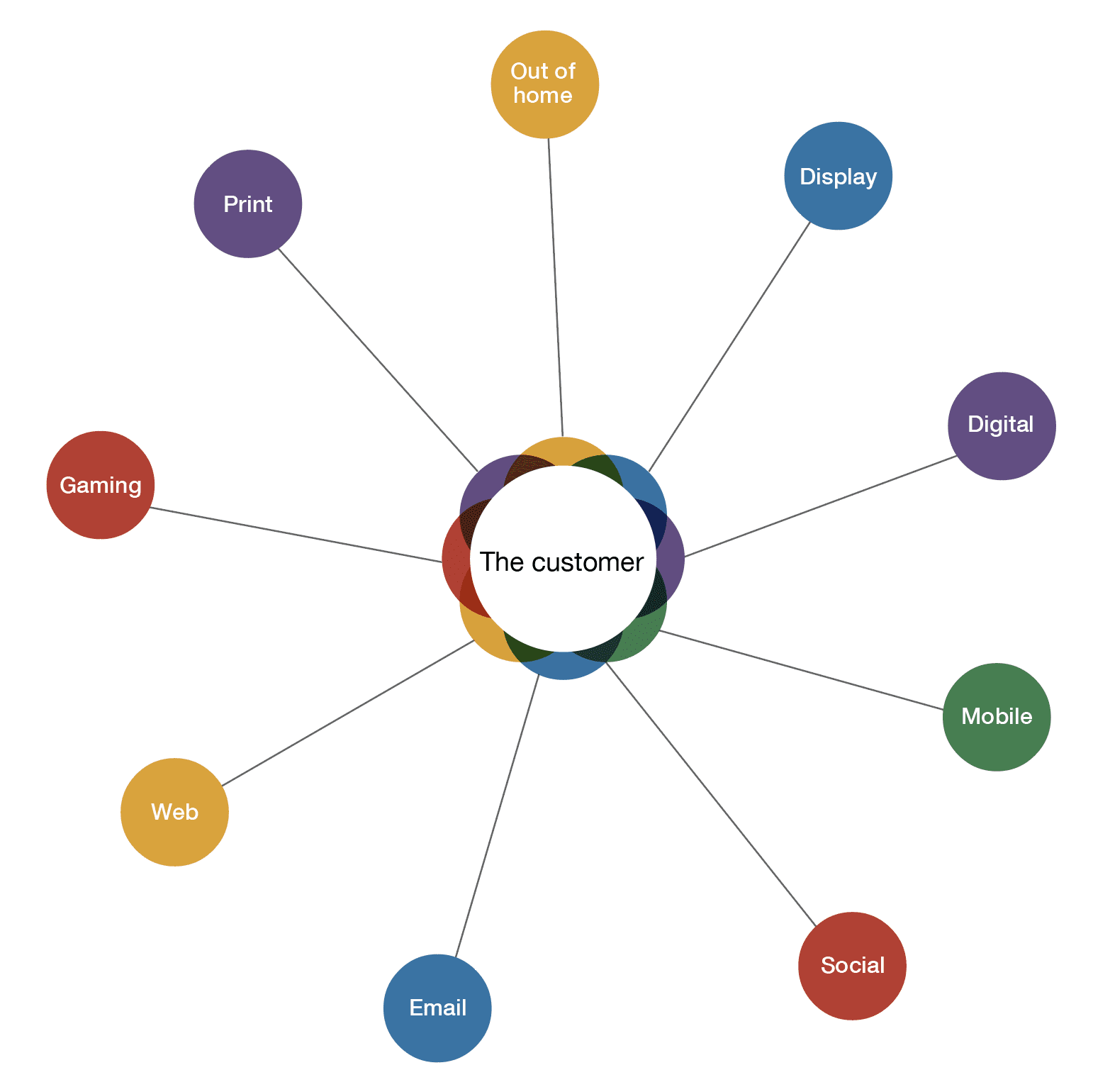What's the meaning of omnichannel today? Definitions and examples of good and bad omnichannel strategy
The promise of omnichannel was to connect brands and customers digitally, meaning they could continue to build their relationship in each subsequent interaction. For the most part, omnichannel hasn’t delivered that.
To understand bad omnichannel marketing, picture yourself in a funhouse surrounded by mirrors. In every direction, you see your reflection in distorted shapes and sizes. The mirrors change appearances, not who you are and what you believe. But if you spend too much time in front of the mirrors – social networks, blogs, or which ever channels you use to present your brand – you can become disoriented and so can your customers.
In these cases, the results of omnichannel marketing feels disjointed to the customer and unmanageable to the marketer. The whole point of ominchannel was to be wherever your potential buyers "hang out." Instead, these marketers are getting lost in their digital channels funhouse, comforted social vanity metrics, click/open rates, and conversion measurements. Don't let that be you! Read on to find out how to create a winning omnichannel strategy.
Current definition of ominchannel
First, what is omnichannel marketing done well?
Within all three definitions, and countless others online, it's clear omnichannel means focusing on the customer's experience of marketing and communications channels, so brands/e-commercers can connect with the customer and build a valuable relationship.
Have you ever entered your email address in order to read a vendor’s research report? Did you get hammered with impersonal emails for a week and then receive a generic phone call from a salesperson who doesn’t know how the brand captured your information or why you gave it? That's the definition of what your omnichannel marketing processes could be churning out without a proper structure in place.
Now we're clear on the actual meaning of omnichannel, and what it isn't, let's take a look at some examples of omnichannel done well, and the solutions to help you get there.

Don’t take omnichannel's meaning too literally
If you want to understand why some omnichannel marketing strategies fail while others are successful, you need to think through the processes behind the definitions.
Consider Trader Joe’s, which has the highest sales per square foot of any grocery chain in America. In November, Stephen Dubner’s Freakonomics podcast asked, "Should America Be Run By…Trader Joe’s?" The episode tried to dissect what made TJ’s so successful.
"…Trader Joe’s seems to be aggressively low-tech," notes Dubner. "No self-checkout aisles. No online ordering and pickup. No customer-loyalty programs and Trader Joe’s gathers no significant data on customers at all. In the modern business world, this is heresy."
Dubner interviews an advertising executive named Mark Gardiner who took a job at Trader Joe’s because he was perplexed by their success. He tells Dubner, "They don’t market. They have a pretty good website now. But for years they had a rudimentary website. They had almost no social media presence. They had almost no kind of public relations." Instead, TJ's have focused on their most important links with the customer, slimming down the number of 'channels' in the mix but doing them well.
Consider different meanings of omnichannel
If we apply the funhouse analogy, TJ’s figured out that shoppers don’t want the 20 mirrors that they could see in every funhouse. They took a much more imaginative approach to what a "channel" is.
At TJ’s, the team members stocking shelves are arguably a channel. They do it during the daytime to "maximize interactions with customers," says Dubner. They staff extra employees in the checkout area for the same reason. Kind, enthusiastic people are a channel.
TJ’s old-school paper news bulletin, The Fearless Flyer, is an odd channel in the digital age. What about their wildly unusual product selection – like the new Dark Chocolate Sunflower Seed Butter Cups or Jackfruit Cakes – with well-written descriptions? Channel.
2020 omnichannel research found that marketers using three or more channels in any one campaign earned a 287% higher purchase rate than those using a single-channel campaign. Three channels, properly integrated, is enough to start accelerating your results, so, focus on the key players before getting distracted.

What about B2B omnichannel meaning?
If you’re a B2B marketer, maybe you’d argue that TJ’s isn’t an applicable example. You’re sick of all those B2B commentators who put consumer brands on a pedestal and tell you to emulate them. How are we supposed to make tech platforms as enticing as Peanut Butter Filled Pretzels?!
Notice that B2C brands are rarely shy about selling you something. There’s no pretense of giving "tips" that inevitably conclude with reasons to buy their product. The price of consumer products doesn’t change that. Jeep doesn’t give tips for driving in the snow that says you need to buy a four-wheel-drive car – like a Jeep.
Maybe omnichannel is failing some B2B marketers because, despite applying every channel under the sun, they aren't maximizing they key messages. And adding more poorly managed channels to the mix only dilutes the prospect pool even further. Find out how to optimize your digital marketing to generate more leads and sales.
Omnichannel strategy essentials for 2021
The impact of the pandemic has varied significantly in different industry sectors across B2B, B2C and D2C. Today's marketers must adapt and change their marketing planning to remain relevant in today's digital disruption and effectively acquire and retain customers in a challenging environment.
In our webinar, digital strategist Dr. Dave Chaffey recommends a strategic review process to compete through more effective integrated marketing communications. Watch now on demand.
The webinar covers:
- The strategic foundations of omnichannel communications
- How to review and improve your digital marketing
- Our latest research for benchmarking digital maturity
- Examples of the latest techniques from different sectors
In the meantime, now that I’ve asked you to rethink the meaning of omnichannel, here are my top tips to start optimizing your channel strategy starting now...
Pay attention to your channels
Stop sending mass spam-mail to people who are already in conversations with your salespeople. It’s ok to "turn off" a channel once it’s no longer relevant. To go from one-on-one conversation back to email blasts feels like a step in the wrong direction.
What if you send the same information from a personal email account instead of a mass email service? It might feel helpful rather than annoying. That’s the power of channels.
Make your website more engaging
Do something on your website that isn’t possible in third-party channels. Everyone has a blog, product pages, demo videos, etc. What can you provide that singles you out for consideration?
There’s a section on The Boring Company’s website titled "Flamethrower." Last year, Elon Musk’s company sold 20,000 "Not-A-Flamethrowers" at $500 a pop in 100 hours, raking in about $10 million (yes, these shoot fire). Mind you, The Boring Company is supposed to be making tunnels for autonomous vehicles. They’re B2B and biz-to-government company.
Assess channel performance
Cut off channels where you feel like you’re doing a mediocre job. "Being everywhere your customers are" can backfire because you’ll never keep up and there will always be a newer, cooler place. Channels are supposed to be business tools, not nightclubs.
For example, some companies look like they hate blogging. They add entries inconsistently and it feels like the writer drew the short straw then wrote one draft and didn’t edit it. Why bother? Just because blogs are common channels that work for some companies, it might not work for your brand. Be "Omni" in another channel where your team feels motivated.
Omnichannel meaning today
We went from funhouses to Trader Joe’s to Elon Musk’s flamethrowers. No, I wasn’t trying to win a bet with my team. Let’s rethink the meaning of omnichannel and come back with a bit of spirit and fire.
Jake Athey is the VP of Marketing at
Widen, the venerable digital asset management company based in Madison, WI, and London, England. He oversees and manages all moving parts of content strategy, brand experiences, sales, partnerships, and more. He believes that the right content, powered by the right technology, can be life-changing for marketers and their business.









